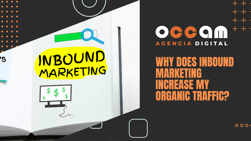Index Content
When creating a company, one of the most important decisions is to choose a corporate image that transmits the colours, shapes, etc., of our brand. Corporate identity is the set of tangible and intangible aspects that make up our brand. In other words, all the visual elements, the brand philosophy, values, etc., define the strategy for your brand to be known. When we talk about brand, logo, typography and colours, we are referring to corporate identity. This is where the psychology of colour comes in, the study of the behaviour and conduct that our brain unconsciously assumes when perceiving colours. So, what do colours mean in marketing?
Studies in this field have shown that every colour psychologically influences people when making a purchase. 85% of people are guided by colour before deciding whether or not to buy a product. This reveals that colours influence people's buying habits. Impulsive buyers respond to red, orange, black and blue and those who plan their purchases respond to light pink, light blue and navy blue. As we walk down the street we see a lot of colours in shops or points of sale that influence our buying decision .
The right use of colours will help your business increase sales, but first it is important that you think about the market your business is aimed at. For example, let's say you sell children's clothes, but your website, brochures, posters, flyers, social media, etc. are aimed at those who buy the clothes: the parents. For them you should use colours that convey confidence like blues, those that convey safety like pinks and those that convey happiness and fun like yellows. All colours convey a meaning and carry a message, so it is important that you know their meanings before you venture into deciding on a colour just because you like it.
Techniques in the use of colours
what do colours mean in marketing? In marketing, colour is a fundamental element. A colour speaks for itself about a brand. So you should know that each colour associates a series of characteristics and values and it is interesting to know the possible existing combinations and their meaning.
Monochromatic ranges:
These are used when an elegant and minimalist effect is sought. A single colour is used in different shades and intensities, which is attractive to the eye without generating fatigue.
Complementary colours:
Used if you are looking for impact and to highlight one or more specific characteristics. Complementary colours are those that are at opposite ends of the colour spectrum, such as yellow and blue. It is used in physical formats such as print and is pleasing and more eye-catching.
Triple range:
If we want to create a bold, but not so strident image, we use this technique. Here three equidistant colours are used in the spectrum such as green, yellow and orange. This technique creates harmony and is widely used on websites.
what do colours mean in marketing?
White
It is the colour of purity, light, cleanliness, harmony. It is used to give a sense of spaciousness, peace, freedom and possibilities, as well as neutrality. Colour associated with weddings. It is the first of all colours. Some brands that use this colour are WWF, iTunes, Nike.
Black
It is the colour of authority, power, stability, strength and intelligence. In many cultures it is the colour of death and mourning, but also the colour of elegance. It is the colour of mystery and seriousness. Some brands that use it are BBC, PlayBoy, Chanel.
Grey
It is the colour of timelessness, practicality and is associated with solidarity. It is a very combinable and neutral colour. However, it is necessary to know how to use it, as it is associated with old age, death and depression. Some brands that use it are: Wikipedia, Swarovski, Mercedes-Benz.
Blue
It is used to evoke peace, confidence, water, controls appetite and stimulates productivity. It gives security and promotes confidence in the brands that use it. It represents stability. Some brands that use this colour are Dell, IBM, HP.
Purple
This colour is associated with royalty, wisdom and respect. It is a colour that transmits sensitivity, delicacy, elegance, luxury or spirituality. It is the result of mixing red and blue. Purple is associated with elegance, sensitivity or even magic. It is widely used in advertising to emphasise distinction or luxury. Some brands that use it are Renfe, Yahoo, Milka.
Pink
It is a soft colour that transmits innocence, tenderness, sensitivity. It is used for children's products. It is associated with femininity and is the colour of breast cancer campaigns. It is an emotional colour and influences feelings, making them kind, soft and deep, thus transmitting affection, love and protection. It is a colour that keeps us away from loneliness. Some brands that use it are Cosmopolitan, Barbie, Victoria's Secret.
Red
Passionate and is associated with movement and excitement. Red symbolises blood, fire, heat, revolution, passion, action and strength. It is the colour that whets the appetite and is the most used by fast food chains. It gives a sense of urgency and is used for sales. It has a vital, ambitious and material temperament and can raise the heart rate. Some famous brands that use this colour are Levi's, Coca-Cola, Vodafone.
Orange
Cheerful, enthusiastic and optimistic. It is related to sociability, originality, extraversion, activity or enthusiasm and closeness. It is very useful to transmit friendly and optimistic messages. This is a colour that activates and gives energy, as well as expressing emotional balance. Some of the brands that use this colour are Blogger, Fanta, Harley-Davidson.
Now that you know what colours mean in marketing, which ones will you use for your brand?





